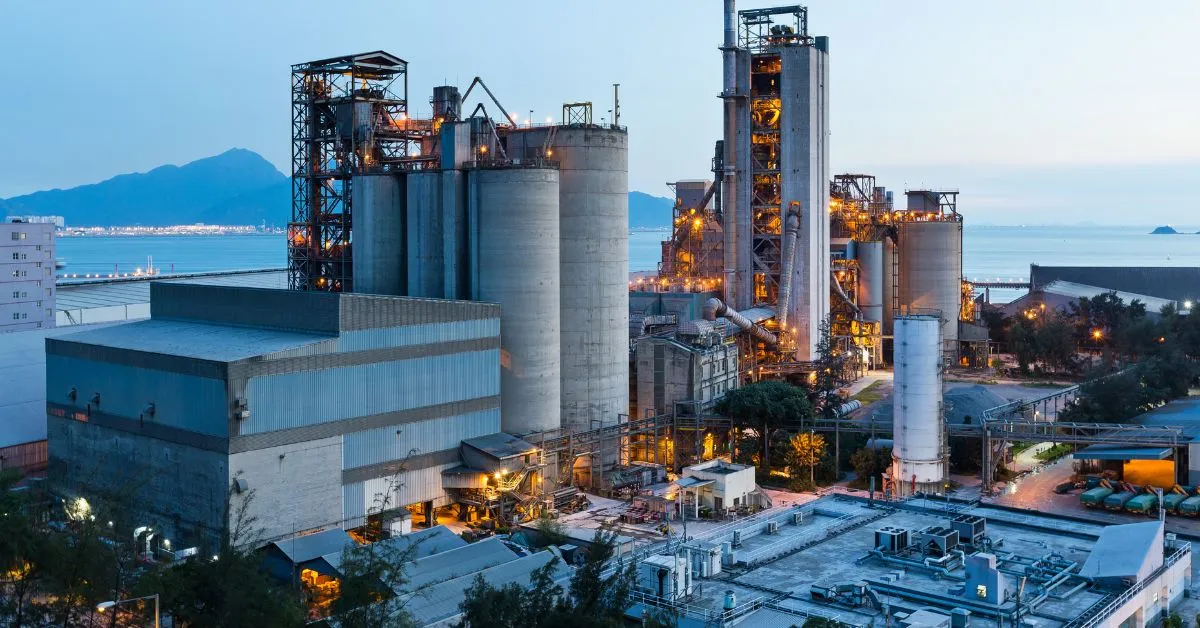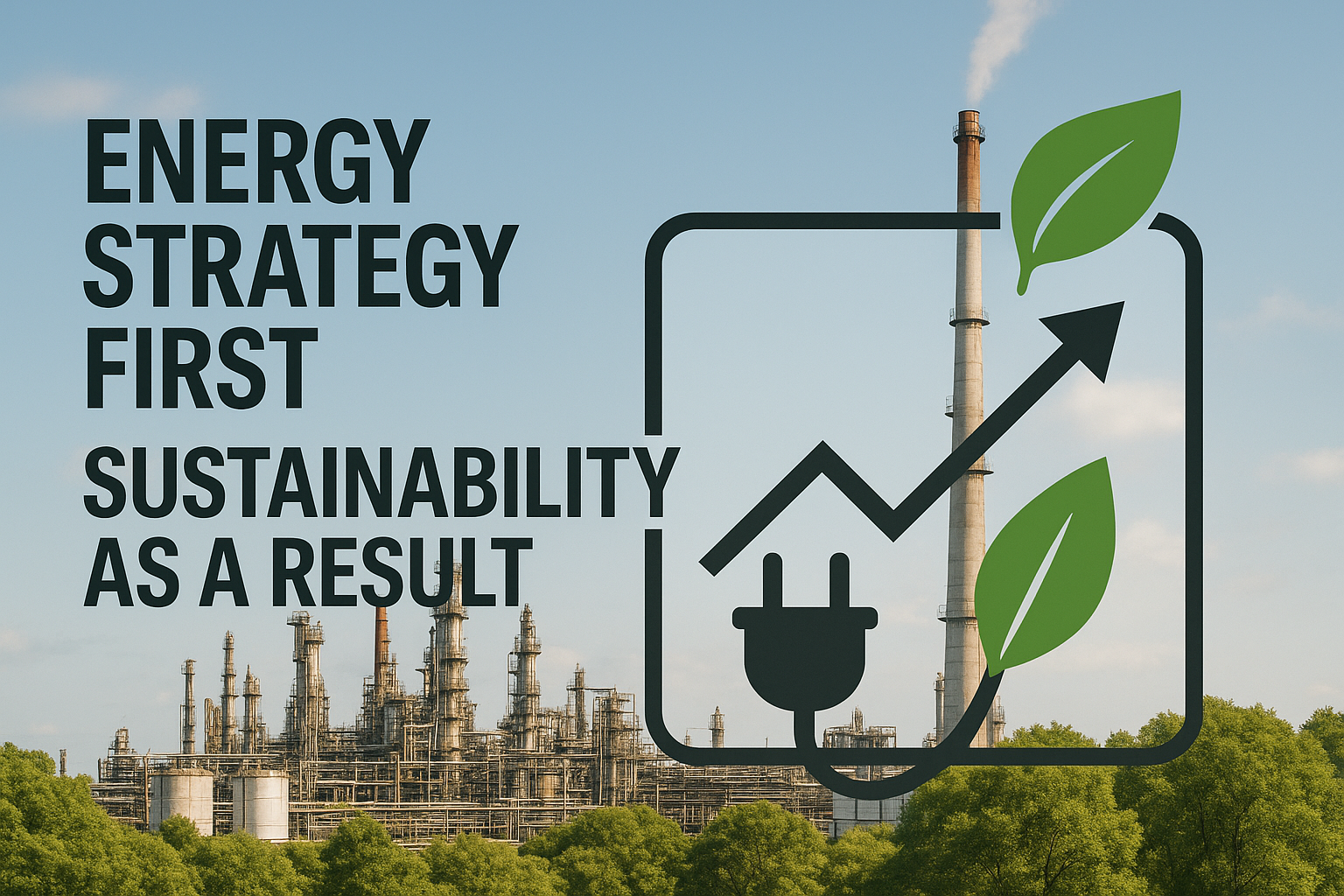Process industry leaders are discovering something surprising: you don’t need to rip out your entire controls infrastructure to get AI benefits. Plants using AI optimization are seeing energy efficiency improvements and throughput boosts, adding millions to large facilities’ bottom lines each year. These gains come from AI processing vast amounts of data to spot optimization opportunities that traditional industrial process solutions simply miss.
You can keep your decades of operational infrastructure intact. Successful teams follow a straightforward 5-step approach: identifying high-ROI opportunities in existing processes, securing your data backbone through smart integration, picking the right optimization technology, running a focused pilot, and scaling AI into your control loops and workforce workflows.
Whether you run cement kilns, chemical reactors, or polymer finishing systems, this approach helps you unlock optimization potential while keeping your legacy infrastructure reliable and safe.
Step 1 – Pinpoint High-ROI Opportunities in Legacy Processes
Before chasing shiny new AI technology, figure out where your plant is actually bleeding value. The best industrial AI projects start with understanding existing inefficiencies, not with the technology itself.
Start with a “value-leak audit” using your historian data. Your DCS, SCADA, or process historians contain years of operational data showing patterns of waste and inefficiency. Focus on three areas: yield losses, energy consumption spikes, and quality giveaways. These data points reveal where your processes drift from optimal performance and where AI can make the biggest impact.
Modern AI platforms can monitor equipment, energy usage, and quality, spotting patterns that traditional control systems miss. Cement kilns often show energy efficiency improvements when AI identifies subtle connections between fuel mix, airflow, and kiln temperature that operators couldn’t catch manually. Chemical plants frequently discover that AI can optimize catalyst performance by analyzing hundreds of variables at once, extending catalyst efficiency and improving yields.
The proven AI sweet spots in industrial settings fall into three categories: advanced monitoring that cuts unplanned downtime, quality control that minimizes non-prime products, and catalyst or reaction optimization that maximizes throughput. These applications offer the clearest path to measurable ROI because they address fundamental constraints directly hitting profitability.
Step 2 – Secure the Data Backbone Without Ripping & Replacing
You don’t need to overhaul your plant’s entire data infrastructure to support industrial AI. Most facilities can build a strong foundation for optimization using the systems they already have. A phased approach allows you to gradually modernize your data environment while keeping operations running smoothly.
The only real requirement for Closed Loop AI Optimization (AIO) is that your plant data exists and is stored somewhere. From there, several best practices can help ensure your data is usable, trustworthy, and accessible to AI systems:
Leverage existing systems: Your current DCS, SCADA, and historian tags often contain the process data most relevant for optimization. These can serve as your initial source of truth.
Clean and contextualize: While not always necessary, applying data cleansing and contextualization can significantly improve model performance. Adding context—like operating regimes, batch identifiers, or manual interventions—helps AI systems make more accurate predictions.
Make data accessible: Industry-standard protocols like OPC UA, MQTT, or REST APIs are recommended for making plant data available to optimization platforms without disrupting control systems.
Consider secure connectivity: Concerns around cybersecurity are valid. Common solutions include network segmentation, least-privilege access models, and the use of secure middleware that bridges legacy systems with modern platforms.
Use middleware and edge computing where needed: Middleware can translate older, proprietary protocols into modern formats. Edge computing can process sensitive data locally, reducing latency and exposure.
Build a central data layer over time: Data lakes or warehouses can consolidate key information from across systems, enabling a unified view of operations without forcing changes to every legacy component.
Start with the data variables identified in Step 1. Prove the approach in a single process or line, and expand from there. This staged strategy allows you to demonstrate ROI without large upfront investments or risky system changes.
Step 3 – Select the Right Optimization Technology
Choosing the right optimization technology shapes your plant’s operational flexibility for years to come. You’re not just picking software, you’re choosing a path that will define how your team works with AI.
In this decision, you will be comparing three main optimization approaches:
Traditional Advanced Process Control (APC)
This method is typically limited to single-unit optimization. It offers high transparency and explainability thanks to its linear nature, but it is limited by first principles assumptions and biases. The ROI timeline is typically 12 to 18 months, and most plants operate it using existing control systems engineers or specialized APC engineers.
Rule-Based Machine Learning
Rule-based ML supports multi-unit optimization and offers a medium level of adaptability, learning within defined constraints. It provides moderate transparency through interpretable rules. Plants usually see ROI in 6 to 12 months, and implementation requires both a process engineer and a data analyst.
Closed-Loop Neural Networks
This approach enables plant-wide optimization with high adaptability due to continuous learning capabilities. However, transparency can be low, as the decision-making process can feel like a black box. It offers the fastest ROI—typically 3 to 9 months—but some solutions require specialized AI talent to manage and maintain.
Industrial automation platforms are moving from rigid, rule-based systems to self-improving environments that adapt to changing conditions without constant manual tweaking. The AI manufacturing talent shortage is real, but it’s manageable.
Your current operators already understand your process better than any data scientist. The key is finding solutions that build on their domain expertise rather than replacing it. Look for vendors who provide comprehensive training programs and can demonstrate successful knowledge transfer to existing plant personnel.
When evaluating AI solutions, focus on proven success metrics from similar industrial environments. Real-time analytics and advanced monitoring capabilities are now standard, but the question is whether the vendor can demonstrate measurable ROI in plants like yours. Ask for case studies with specific numbers—energy efficiency improvements, yield increases, or downtime reduction—not vague promises about “optimization.” Ask whether a human is required to take an action to capture the value. And know that if the answer is yes, 100% value capture is unlikely to be attained.
Step 4 – Pilot, Prove Value, and Scale
Your pilot phase faces a critical constraint: proving business value while maintaining operational stability. Process industry leaders need structured execution with clear milestones that build confidence and demonstrate measurable returns.
This proven timeline addresses the real-world realities of pilot implementation:
Week 0: Baseline Establishment
Pull 12-18 months of historian data and establish baseline KPIs for your target system. Define success metrics that align with your financial targets, energy efficiency improvements, throughput gains, or quality improvements. Document current operating ranges and variability patterns.
Week 4: Shadow Mode Verification
Deploy your AIO solution in advisory-only mode alongside existing controls. Compare AI recommendations against actual operator decisions and system outcomes. This phase validates model accuracy and builds operator familiarity without operational risk. Address any data drift issues through scheduled retraining protocols.
Week 8: Activation
Transition to live optimization with clear override capabilities for operators. Start with conservative constraints and gradually expand the AI’s operational envelope as confidence builds. Monitor system performance continuously and document all interventions. Robust change management during this phase prevents operator resistance from derailing your project.
Week 12: Financial Validation
Calculate actual vs. projected returns using your baseline data. Present results to your steering committee with specific scaling recommendations.
Step 5 – Integrate AI into Control Loops & Workforce Workflows
Once your pilot proves value, the final step involves integrating AI recommendations into your existing control infrastructure and daily operations. This integration requires both technical precision and human-centered change management to achieve sustained adoption across your workforce.
Hybrid system architectures allow AI and legacy systems to operate in parallel, ensuring continuity while gradually expanding AI capabilities.
Start by configuring your AIO solution to send optimized set-points directly to your DCS or PLC systems through secure middleware connections. Most industrial AI platforms support standard protocols like OPC UA or Modbus, enabling real-time communication without requiring hardware changes.
Deploy the AI system in “advisory mode” initially, where operators receive recommendations through existing HMI screens before any automated control actions occur. This approach builds confidence while maintaining human oversight of critical processes. Edge computing solutions can process AI models locally, reducing latency and maintaining operations even during network disruptions.
Your workforce determines whether AI integration succeeds or stalls. Create operator co-pilot screens that display AI recommendations alongside traditional process variables, showing the “why” behind each suggestion. This transparency builds trust and helps operators understand AI decision-making logic.
Implement daily KPI huddles where teams review AI-driven performance improvements from the previous shift. These 10-minute meetings reinforce the value proposition and create accountability around AI adoption. Successful change management strategies emphasize transparent communication and two-way feedback channels between management and front-line operations.
Establish human-AI collaboration frameworks that clearly define when operators should accept, modify, or override AI recommendations. This approach addresses resistance while empowering your workforce to remain engaged in decision-making processes.
Quick-Start: Is Your Plant Ready for AI Optimization?
Take two minutes to assess your readiness for AI implementation. This quick check will save you months of wasted effort and help focus on what truly matters.
The 5-Question Readiness Check:
Question 1: Do you have historian or DCS data access (at least 1-minute frequency, ≥12 months)?
Without consistent, high-frequency data from your control systems, even the most sophisticated AI will struggle to find optimization opportunities.
Question 2: Is there an executive sponsor with budget authority?
AI integration needs dedicated resources and sustained commitment. You’ll need visible leadership support to navigate the technical and organizational hurdles.
Question 3: Can you identify a pain-point KPI (energy $/unit, yield %, quality giveaway, unplanned downtime)?
Successful AI projects start with clear operational inefficiencies, not fancy technology. You need a specific metric that directly hits your bottom line.
Question 4: Are your OT/IT security protocols aligned?
Bridging operational technology with information systems can create security gaps if not properly managed. Your cybersecurity team must support secure data flow between legacy systems and modern AI platforms.
Question 5: Does your team have the bandwidth for a 90-day pilot?
Implementation needs dedicated time from your process engineers, controls specialists, and operators. Without adequate bandwidth, even promising pilots fail from lack of attention.
Your Go/No-Go Decision
If you answered “No” to two or more questions, start fixing these gaps. Successful AI integration depends more on organizational readiness than technology sophistication. Build your data foundation, secure executive support, and identify clear value targets first.
The goal isn’t replacing your existing systems, but making them smarter. The five-step roadmap ahead shows exactly how to layer AI optimization onto your current infrastructure without disrupting critical operations.
Final Thoughts
For process industry leaders seeking sustainable efficiency improvements, Imubit’s Closed Loop AI Optimization offers a data-first approach grounded in real-world operations. The Imubit Industrial AI Platform provides transparent AI techniques that integrate seamlessly with existing operations while delivering measurable results in energy efficiency and production optimization.
The transformation of industrial operations through AI represents a paradigm shift that promises substantial returns for those who approach it systematically. By following the structured approach outlined here—from readiness assessment through pilot execution and scaling—process industry leaders can unlock the full potential of their existing infrastructure while building capabilities for the future.
Success depends not on having the most advanced technology, but on making intelligent decisions about where and how to deploy AI solutions that deliver measurable value to your operations. Start today by scheduling your free AIO assessment.




